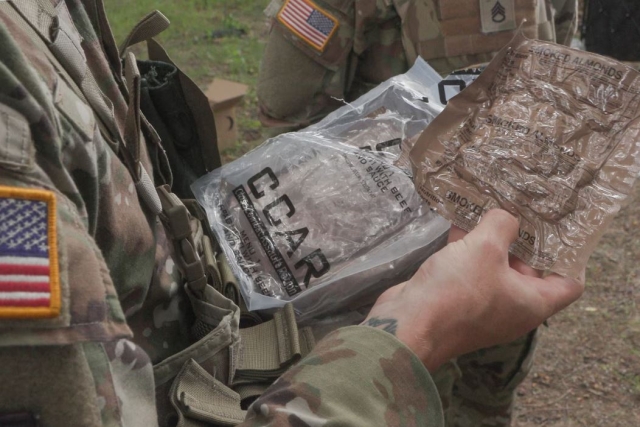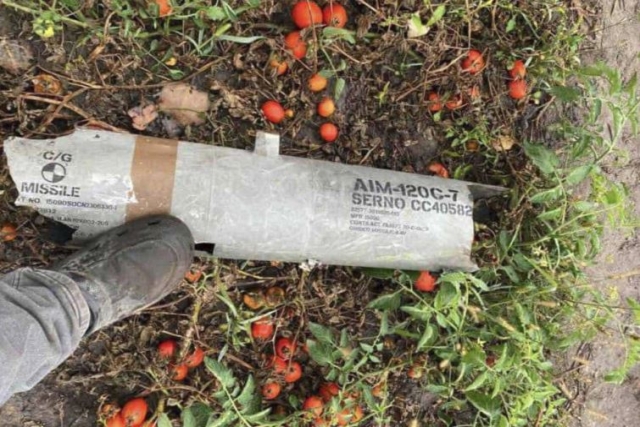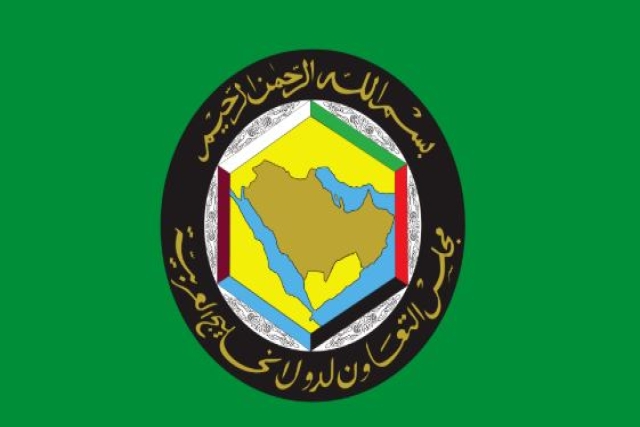Tactical 5G Networking Will Define the Future of Battlefield Communications
Macy Summers, President, Blu Wireless Inc. USA

Macy Summers, President, Blu Wireless Inc. USA
Macy Summers, President Blu Wireless Inc. USA (https://www.bluwireless.com) a pioneer in mmWave communications and a leader in wireless networking equipment, talks to Defenseworld.net about the challenges, solutions, and practical applications of tactical 5G networks using mmWave technology. He told us that 5G will define the future of battlefield- IEEE 5G will enable radar sensor data from one vehicle or drone to be combined with ELINT from another physically distanced drone and then integrated via Artificial Intelligence (AI) into fire control systems. Excerpts from the interview:
DW : Tell us about Blu Wireless mmWave networking equipment and its advantages.
Macy Summers: Blu Wireless’ IEEE 5G mmWave wireless solutions are engineered for emerging connectivity needs – from smart city networks and connected vehicles to security and defense. We are working with a number of customers in the defense sector to apply and extend our mmWave technology, which is currently being deployed for ‘Rail 5G’ applications, to tactical comms at the network edge. This includes Mobile Edge Compute (MEC) functionality for smart networking and first level data analytics. mmWave operation over the license exempt 57-71 GHz spectrum allows support for large (2 GHz) channel widths for robust multi-gigabit rate communications using lower modulation levels. Hence, IEEE 5G mmWave based systems are better matched to the needs of tactical communications for the following reasons: Standalone, secure & stealthy; Open – they are easily interfaced to other communications systems (via IP/Ethernet); Flexible use of non-commercial spectrum; Resilient to single point failures and channel interference; Simple and rapid set-up; Utilize distributed, peer-to-peer, mesh networks rather than a centralized core, star topology network (which means there is no single point of failure); Flexibility to support a wide range of use cases from space, air, land and naval forces. Crucially, low SWAP (Size, Weight and Power) for IEEE 5G based systems is also compatible with the needs of vehicle level and soldier level deployments.
DW : How is the scope of 5G for Military use different from civilian use?
Macy Summers: The needs of military applications are radically different from commercial 5G networks. Tactical 5G Military networks necessitate systems which are standalone, secure, and can be easily interfaced to existing tactical equipment. In contrast to commercial 5G networks, tactical 5G networks also need to be resistant to single point of failure, i.e. they cannot rely on a network that would have compromised connectivity should the signal from a single tower be interrupted for any reason. IEEE 5G wireless mesh networks, based on open mmWave standards, offer the flexibility, security and reliability needed to enable a wide range of use cases in naval, space, air, and land forces to deliver next-generation ‘gigabit’ speed to the tactical edge. Not only does it meet current demand, but IEEE 5G wireless is also enabling new use cases for tactical 5G networks, such as AI-driven and rapid deployable Command Posts.
DW : How do you think 5G will affect the battlefield?
Macy Summers: The tactical integration of multi spectral (Radar/IR/Video/ELINT/SIGNIT) sensor data from multiple sources in real time will define the future of battlefield communications. The ability of IEEE 5G to deliver peer-to-peer dynamic mesh networks will form a key part of this vision. For example, radar sensor data from one vehicle or drone can be combined with ELINT from another physically distanced drone and then integrated via AI into fire control systems. Thus, each vehicle or drone can be focused on a specific capability within a cluster with the tactical 5G network used to integrate these capabilities in real time. Consequently, the complexity, power consumption and size for each element can be minimized and enhanced with new capabilities as technologies mature and evolve at different rates. In turn this reduces the complexity of procurement programs as the requirements for each platform can be simplified and focused on one or two core capabilities. A good example of this trend is seen in the UK’s Tempest next generation fighter program for the RAF which will use ‘Swarms of Drones’ controlled by the aircraft to extend the total platform battlefield capability.
DW : How can present tech and legacy systems (Radars, communication devices) cope with 5G?
Macy Summers: Existing technology forms an integral part of any defense communications network, however, carrying more than voice and simple datagrams to and from the point of the spear is often still deficient. IEEE 5G wireless, along with the unused mmWave frequency bands, has the unique ability to close this gap, bringing robust and covert gigabit edge computing communications to the tactical edge. Not only can this 5G mmWave technology link weapons platforms, command posts, FOB, ISR and C2 with the edge, IEEE 5G technology also allows for DoD’s pass-through governance, cybersecurity, management, and data rules. mmWave 5G is not just a pipe. It’s a robust and covert weapons delivery mechanism being tested by Army Futures today, connecting legacy systems and providing new, stealthy, gigabit communications capabilities to the tactical edge.
DW : Is Blu Wireless able to network multiple battlefield assets? Is there a restriction on being a manned or an unmanned asset?
Macy Summers: The Blu Wireless IEEE 5G wireless solution is capable of gigabit data speed connections to platforms on the move, as long as they are in line-of-sight and within range. Unmanned assets are perfect candidates for this technology due to the wide bandwidths supported, enabling AI and Machine Learning utilizing extreme sensitivity sensor payloads with high-definition (4k/8k) video feeds.
DW : Can you explain how 5G will impact a typical application such as the U.S. Joint All-Domain Command and Control (JADC2) program?
Macy Summers: Integration of multiple data sources and communications across a wide range of operations, including space, air, land, and sea, has been recognized as a key strategic challenge for the future of military command and control. The Joint All-Domain Command and Control (JADC2) initiative from the US DoD is one such example aimed at integrating multiple (and legacy) communication networks with new AI data-driven command and control requirements. ‘Tactical 5G’ has an important role to play in providing an open, flexible and secure communications framework as part of this initiative.










